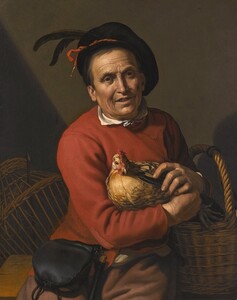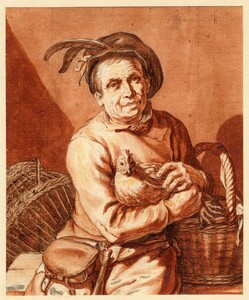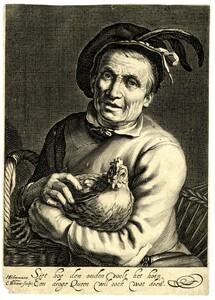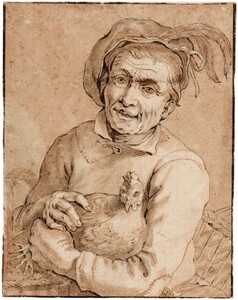2.000 €
Anonymous Dutch painter, second half 17th century
After an engraving by Cornelis Bloemaert II made after a painting by his half-brother Hendrick Bloemaert circa 1625/1630
A man holding a hen
Oil on canvas : 29,3 X 24,7 cm
Unsigned
Frame : 38,5 X 34,0 cm
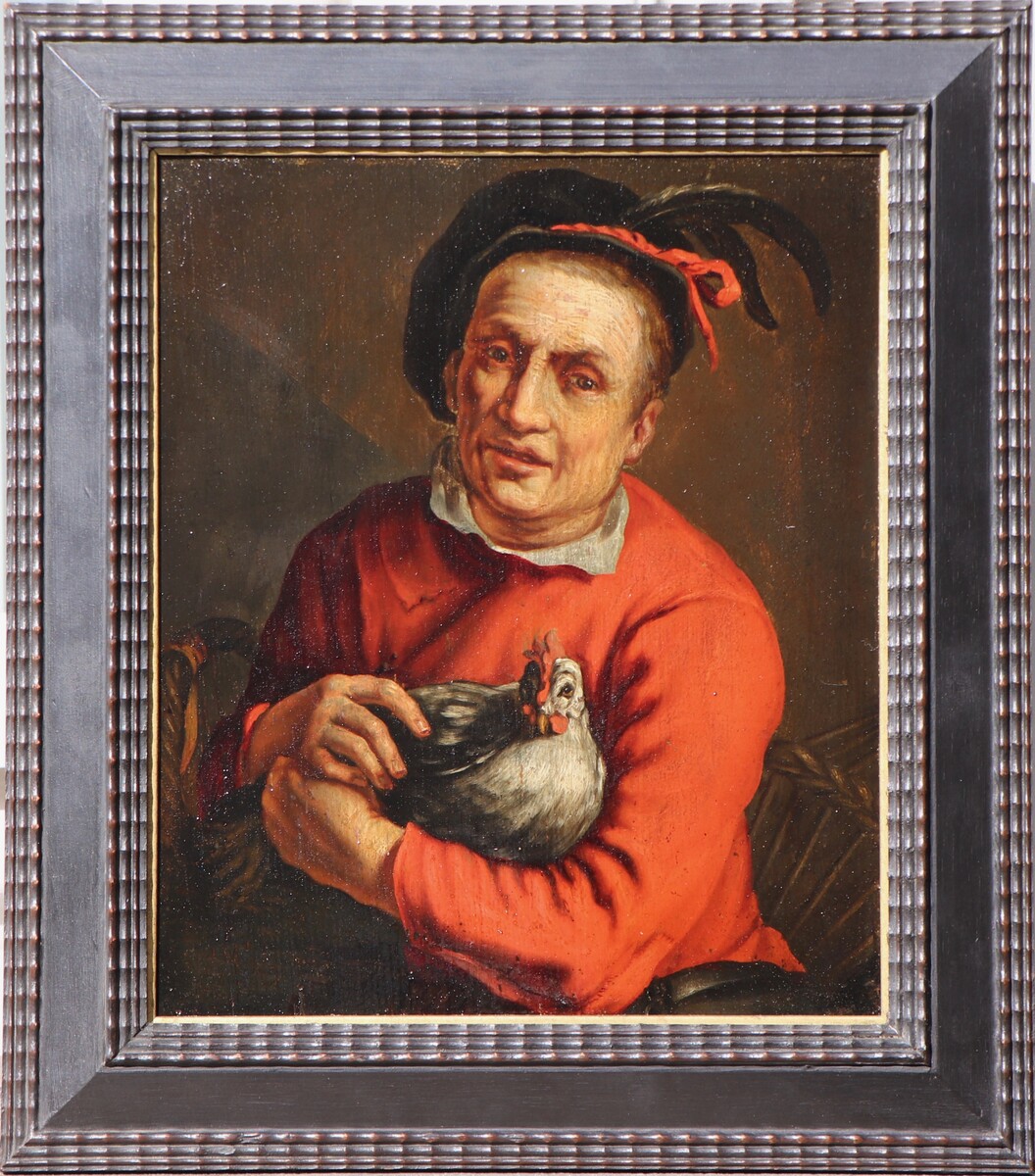
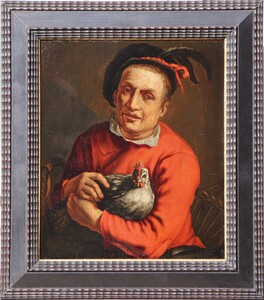
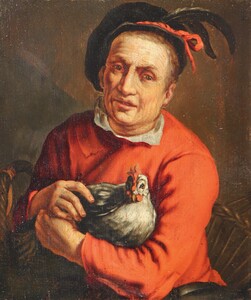
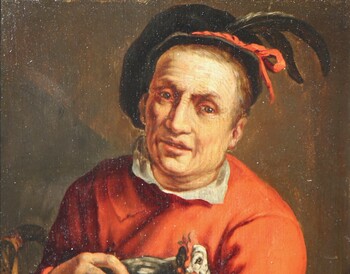
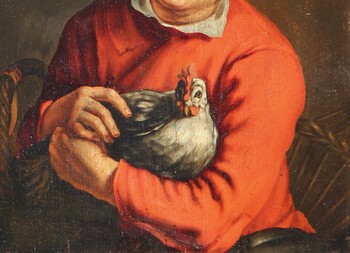
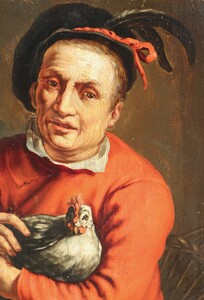
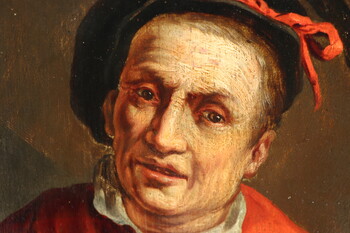
In short
There is much more than meets the eye to this Dutch painting from the second half of the 17th century. This apparently innocent representation of a man holding a hen actually stood for a lustful man, a “hennentaster” in Dutch. Its composition goes back to a painting by Hendrick Bloemaert, which was engraved by his half-brother Cornelis II. Both date from circa 1625/1630.
About our painting
This painting represents a not so innocent subject: a “hennentaster” which during the 17th century stood for a horny, grabby man.
Our composition goes back to an engraving by Cornelis Bloemaert II, made in reverse after a painting by Hedrick Bloemaert. That painting was sold at Sotheby’s London in 2016. The British Museum in London holds a good example of the engraving by Cornelis II. It also has the drawing that Hendrick Bloemaert specially made to be engraved by his half-brother Cornelis II. All three date circa 1625 – 1630.
The Pushkin Museum of Moscow has a drawing which, as our painting, must date from the second half of the 17th century.
Under the engraving by Cornelis Bloemaert II stands the following sexually inspired Dutch text:
"Siet hoe den ouden voelt het hoen, / Een droge Queen wil oock wat doen.”
That means “See how the old man feels the chicken, / A dry old infertile woman also wants to do someting.” Indeed, in old Dutch a “queen” does not have the same meaning as in English; it refers to an old infecunt woman.
Originally a so-called “hen-finger” was the wife of a farmer who feels a hen from beyond to see if it is still able to lay eggs. Caring for poultry was seen as women’s work. During the 16th and 17th century our representation of a man groping a hen stood for a voluptuous lecher. Strangely enough by the 18th century a so-called “hen-finger” lost that significance: it then solely stood for an unmanly slipper hero carrying out household jobs for his bossy wife. I shoud mention that this connotation did already exist in previous centuries, but that the other meaning of the excited man obviously was more popular.
Comparative paintings
Click photos for more details

